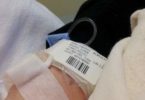What's in this article?
What is Gonorrhea
Also called the “clap” or “drip,” gonorrhea is a contagious disease transmitted most often through sexual contact with an infected person. Gonorrhea may also be spread by contact with infected bodily fluids, so that a mother could pass on the infection to her newborn during childbirth. Both men and women can get gonorrhea. The infection is easily spread and occurs most often in people who have many sex partners.
Symptoms of Gonorrhea
Symptoms usually occur within two to 14 days after exposure. However, some people infected with gonorrhea never develop noticeable symptoms. It’s important to remember that a person with gonorrhea who doesn’t have symptoms, also called a nonsymptomatic carrier, is still contagious. A person is more likely to spread the infection to other partners when they don’t have noticeable symptoms.
Symptoms in men
Men may not develop noticeable symptoms for several weeks. Some men may never develop symptoms.
Typically, the infection begins to show symptoms a week after its transmission. The first noticeable symptom in men is often a burning or painful sensation during urination. As it progresses, other symptoms may include:
- greater frequency or urgency of urination
- a pus-like discharge (or drip) from the penis (white, yellow, beige, or greenish)
- swelling or redness at the opening of the penis
- swelling or pain in the testicles
- a persistent sore throat
The infection will stay in the body for a few weeks after the symptoms have been treated. In rare instances, gonorrhea can continue to cause damage to the body, specifically the urethra and testicles. Pain may also spread to the rectum.
Symptoms in women
Many women don’t develop any overt symptoms of gonorrhea. When women do develop symptoms, they tend to be mild or similar to other infections, making them more difficult to identify. Gonorrhea infections can appear much like common vaginal yeast or bacterial infections.
Symptoms include:
- discharge from the vagina (watery, creamy, or slightly green)
- pain or burning sensation while urinating
- the need to urinate more frequently
- heavier periods or spotting
- sore throat
- pain upon engaging in sexual intercourse
- sharp pain in the lower abdomen
- fever
Causes Gonorrhea
Gonorrhea is caused by Neisseria gonorrhoeae, a bacterium that can grow and multiply easily in mucus membranes of the body. Gonorrhea bacteria can grow in the warm, moist areas of the reproductive tract, including the cervix (opening to the womb), uterus (womb), and fallopian tubes (egg canals) in women, and in the urethra (the tube that carries urine from the bladder to outside the body) in women and men. The bacteria can also grow in the mouth, throat, and anus.
How Can I Know If I Have Gonorrhea?
Talk with your health care provider about how often you should be tested for gonorrhea and other STDs.
Gonorrhea Treatment
A number of different antibiotics may be used for treating this type of infection.
- You may receive one large dose of oral antibiotics or take a smaller dose for seven days.
- You may be given an antibiotic injection or shot, and then perhaps be sent home with antibiotic pills.
- More severe cases of PID (pelvic inflammatory disease) may require you to stay in the hospital. Antibiotics are first given by IV.
- Never treat yourself without being seen by your doctor first. Your health care provider will determine the best treatment.
About half of the women with gonorrhea are also infected with chlamydia. Chlamydia is treated at the same time as a gonorrhea infection.
You will need a follow-up visit 7 days after if your symptoms include joint pain, skin rash, or more severe pelvic or belly pain. Tests will be done to make sure the infection is gone.
Sexual partners must be tested and treated to prevent passing the infection back and forth. You and your partner must finish all of the antibiotics. Use condoms until you both have finished taking your antibiotics.
All sexual contacts of the person with gonorrhea should be contacted and tested. This helps prevent further spread of the infection.
- In some places you may be able to take information and medicines to your sexual partner yourself.
- In other places, the health department will contact your partner.






Leave a Comment